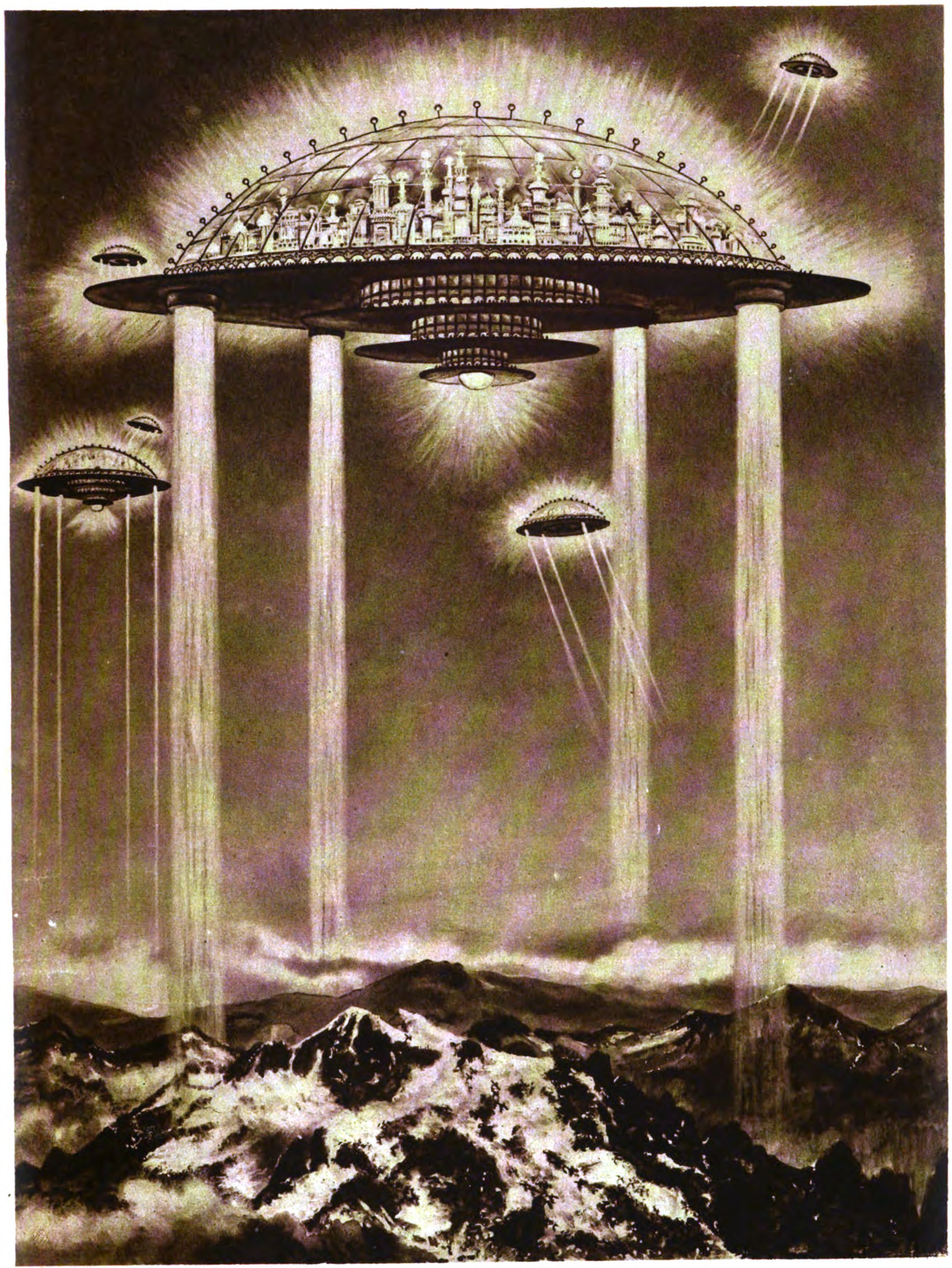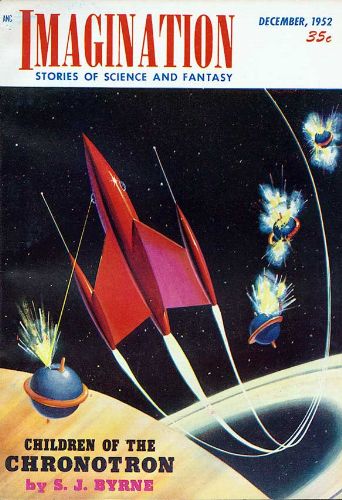|
Closed Ecological System
Closed ecological systems or contained ecological systems (CES) are ecosystems that do not rely on matter exchange with any part outside the system. The term is most often used to describe small, man-made ecosystems. Such systems can potentially serve as a life-support system or space habitats. In a closed ecological system, any waste products produced by one species must be used by at least one other species. If the purpose is to maintain a life form, such as a mouse or a human, waste products such as carbon dioxide, feces, and urine must eventually be converted into oxygen, food, and water. A closed ecological system must contain at least one autotrophic organism. While both chemotrophic and phototrophic organisms are plausible, almost all closed ecological systems to date are based on an autotroph such as green algae. Examples A closed ecological system for an entire planet is called an ecosphere. Man-made closed ecological systems which were created to sustain human ... [...More Info...] [...Related Items...] OR: [Wikipedia] [Google] [Baidu] |
Biosphere2 1
The biosphere (), also called the ecosphere (), is the worldwide sum of all ecosystems. It can also be termed the zone of life on the Earth. The biosphere (which is technically a spherical shell) is virtually a closed system with regard to matter,"Biosphere" in ''The Columbia Encyclopedia'', 6th ed. (2004) Columbia University Press. with minimal inputs and outputs. Regarding , it is an open system, with capturing |
Algae
Algae ( , ; : alga ) is an informal term for any organisms of a large and diverse group of photosynthesis, photosynthetic organisms that are not plants, and includes species from multiple distinct clades. Such organisms range from unicellular microalgae, such as cyanobacteria, ''Chlorella'', and diatoms, to multicellular macroalgae such as kelp or brown algae which may grow up to in length. Most algae are aquatic organisms and lack many of the distinct cell and tissue types, such as stomata, xylem, and phloem that are found in embryophyte, land plants. The largest and most complex marine algae are called seaweeds. In contrast, the most complex freshwater forms are the Charophyta, a Division (taxonomy), division of green algae which includes, for example, ''Spirogyra'' and stoneworts. Algae that are carried passively by water are plankton, specifically phytoplankton. Algae constitute a Polyphyly, polyphyletic group because they do not include a common ancestor, and although Eu ... [...More Info...] [...Related Items...] OR: [Wikipedia] [Google] [Baidu] |
Domed City
A domed city is a hypothetical structure that encloses a large urban area under a single roof. In most descriptions, the dome is airtight and pressurized, creating a habitat that can be controlled for air temperature, composition and quality, typically due to an external atmosphere (or lack thereof) that is inimical to habitation for one or more reasons. Domed cities have been a fixture of science fiction and futurology since the early 20th century, offer inspirations for potential utopias and may be situated on Earth, a moon or other planet. Origin The social reformer Charles Fourier proposed in 1808 that an ideal city must be connected by glass galleries and the botanist John Claudius Loudon, J. C. Loudon wrote in his ''An Encyclopedia of Gardening'' (1822) about whole cities covered by a giant glass roof In Northern countries, civilized man could not exist without glass; and if coal is not discovered in these countries, say in Russia, the most economical mode of procuring t ... [...More Info...] [...Related Items...] OR: [Wikipedia] [Google] [Baidu] |
Science Fiction
Science fiction (often shortened to sci-fi or abbreviated SF) is a genre of speculative fiction that deals with imaginative and futuristic concepts. These concepts may include information technology and robotics, biological manipulations, space exploration, time travel, Parallel universes in fiction, parallel universes, and extraterrestrials in fiction, extraterrestrial life. The genre often explores human responses to the consequences of projected or imagined scientific advances. Science fiction is related to fantasy (together abbreviated wikt:SF&F, SF&F), Horror fiction, horror, and superhero fiction, and it contains many #Subgenres, subgenres. The genre's precise Definitions of science fiction, definition has long been disputed among authors, critics, scholars, and readers. Major subgenres include hard science fiction, ''hard'' science fiction, which emphasizes scientific accuracy, and soft science fiction, ''soft'' science fiction, which focuses on social sciences. Other no ... [...More Info...] [...Related Items...] OR: [Wikipedia] [Google] [Baidu] |
Gorgonia
''Gorgonia'' is a genus of soft corals, sea fans in the family Gorgoniidae. Species The World Register of Marine Species lists these species A species () is often defined as the largest group of organisms in which any two individuals of the appropriate sexes or mating types can produce fertile offspring, typically by sexual reproduction. It is the basic unit of Taxonomy (biology), ...: References Gorgoniidae Octocorallia genera Taxa named by Carl Linnaeus {{octocorallia-stub ... [...More Info...] [...Related Items...] OR: [Wikipedia] [Google] [Baidu] |
Exoskeleton
An exoskeleton () . is a skeleton that is on the exterior of an animal in the form of hardened integument, which both supports the body's shape and protects the internal organs, in contrast to an internal endoskeleton (e.g. human skeleton, that of a human) which is enclosed underneath other soft tissues. Some large, hard and non-flexible protective exoskeletons are known as mollusc shell, shell or armour (anatomy), armour. Examples of exoskeletons in animals include the arthropod exoskeleton, cuticle skeletons shared by arthropods (insects, chelicerates, myriapods and crustaceans) and tardigrades, as well as the corallite, skeletal cups formed by hardened secretion of stony corals, the test (biology), test/tunic of sea squirts and sea urchins, and the prominent mollusc shell shared by snails, bivalvia, clams, tusk shells, chitons and nautilus. Some vertebrate animals, such as the turtle, have both an endoskeleton and a turtle shell, protective exoskeleton. Role Exoskeletons c ... [...More Info...] [...Related Items...] OR: [Wikipedia] [Google] [Baidu] |
Gravel
Gravel () is a loose aggregation of rock fragments. Gravel occurs naturally on Earth as a result of sedimentation, sedimentary and erosion, erosive geological processes; it is also produced in large quantities commercially as crushed stone. Gravel is classified by grain size, particle size range and includes size classes from granule (geology), granule- to boulder-sized fragments. In the grain size, Udden-Wentworth scale gravel is categorized into granular gravel () and pebble gravel (). ISO 14688 grades gravels as fine, medium, and coarse, with ranges for fine and for coarse. One cubic metre of gravel typically weighs about , or one cubic yard weighs about . Gravel is an important commercial product, with a number of applications. Almost half of all gravel production is used as construction aggregate, aggregate for concrete. Much of the rest is used for road construction, either in the road base or as the road surface (with or without bitumen, asphalt or other binders.) Natu ... [...More Info...] [...Related Items...] OR: [Wikipedia] [Google] [Baidu] |
Shrimp
A shrimp (: shrimp (American English, US) or shrimps (British English, UK)) is a crustacean with an elongated body and a primarily Aquatic locomotion, swimming mode of locomotion – typically Decapods belonging to the Caridea or Dendrobranchiata, although some Shrimp#Non-decapods, crustaceans outside of this order are also referred to as "shrimp". Any small crustacean may also be referred to as "shrimp", regardless of resemblance. More narrow definitions may be restricted to Caridea, to smaller species of either of the aforementioned groups, or only the Marine life, marine species. Under a broader definition, ''shrimp'' may be synonymous with prawn, covering stalk-eyed swimming crustaceans with long, narrow muscular tails (Abdomen#Arthropoda, abdomens), long whiskers (Antenna (biology), antennae), and slender, Biramous, biramous legs. They swim forward by paddling the swimmerets on the underside of their abdomens, although their escape response is typically repeated flicks wit ... [...More Info...] [...Related Items...] OR: [Wikipedia] [Google] [Baidu] |
Ecosphere (aquarium)
The EcoSphere and "Original Ecosphere" are trademark names for sealed blown-glass miniature aquaria formerly produced by Ecosphere Associates, Inc., of Tucson, Arizona, United States. Spherical or ovoid, the aquaria ranged from roughly pool-ball-size to basket-ball-size. They were sold worldwide as scientific novelties and decorative objects. The EcoSphere's main visual appeal was provided by tiny red-pink shrimp, '' Halocaridina rubra'', between 1/4 and 3/8 inch (or approximately a centimeter) in length. The shrimp swam energetically around the aquarium; ate the brown bacterial and algal scum on the glass; consumed the filamentous green algae which formed a globular pillow in the water; and perched on a fragment of soft coral. The main conceptual interest of these objects lay in the fact that they were materially closed ecological systems which were self-sustaining over a period of years. At room temperature, and with only low inputs of light, the algae produced oxygen whic ... [...More Info...] [...Related Items...] OR: [Wikipedia] [Google] [Baidu] |
Bottle Garden
A bottle garden is a type of closed terrarium in which plants are grown. They usually consist of a plastic bottle, plastic or glass bottle with a narrow neck and a small opening. Plants are grown inside the bottle with little or no exposure to the outside environment and can be contained indefinitely inside the bottle if properly sun light, illuminated. The oldest bottle garden in existence is alleged to have been planted in 1960, and to have remained sealed from 1972 until at least 2013. Uses Bottle gardens are commonly used as a form of decoration, or as a substitute garden in areas with little space, such as patios or Tower block, high rise apartments. Being easy to create and maintain, bottle gardens are also used in schools as an economical way to study miniature eco-systems within the confines of a classroom. They can also be used as a control mechanism, enabling the internal environment of the bottle to be effectively controlled and isolated from outside stimuli. Bottle gard ... [...More Info...] [...Related Items...] OR: [Wikipedia] [Google] [Baidu] |
BIOS-3
BIOS-3 is an experimental closed ecosystem at the Institute of Biophysics in Krasnoyarsk, Russia. Its construction began in 1965, and was completed in 1972. BIOS-3 consists of a underground steel structure suitable for up to three persons, and was initially used for developing closed ecological human life-support ecosystems. It was divided into 4 compartments, one of which is a crew area. The crew area consists of 3 single-cabins, a galley, lavatory and control room. Initially one other compartment was an algal cultivator, and the other two phytotrons for growing wheat or vegetables. The plants growing in the two phytotrons contributed approximately 25% of the air filtering in the compound. Later, the algal cultivator was converted into a third phytotron. A level of light comparable to sunlight was supplied in each of the 4 compartments by 20 kW xenon lamps, cooled by water jackets. The facility used 400 kW of electricity, supplied by a nearby hydroelectric power station. ... [...More Info...] [...Related Items...] OR: [Wikipedia] [Google] [Baidu] |
MELiSSA
Melissa is a feminine given name. The name comes from the Greek language, Greek word μέλισσα (''mélissa''), "bee", which in turn comes from μέλι (''meli''), "honey". In Hittite language, Hittite, ''melit'' signifies "honey". Melissa is a common variant form, with others being Malissa, Melesa, Melessa, Meliza, Mellisa, Melosa, and Molissa. According to Greek mythology, perhaps reflecting Minoan culture, making her the daughter of a Cretan king Melisseus, whose ''-issos'' ending is Pre-Greek, Melissa was a nymph who discovered and taught the use of honey and from whom bees were believed to have received their name. She was one of the nymph nurses of Zeus, sister to Amalthea (mythology), Amaltheia, but rather than feeding the baby milk, Melissa, appropriately for her name, fed him honey. Or, alternatively, the bees brought honey straight to his mouth. Because of her, ''Melissa'' became the name of all the nymphs who cared for the patriarch god as a baby. Melissa can al ... [...More Info...] [...Related Items...] OR: [Wikipedia] [Google] [Baidu] |








